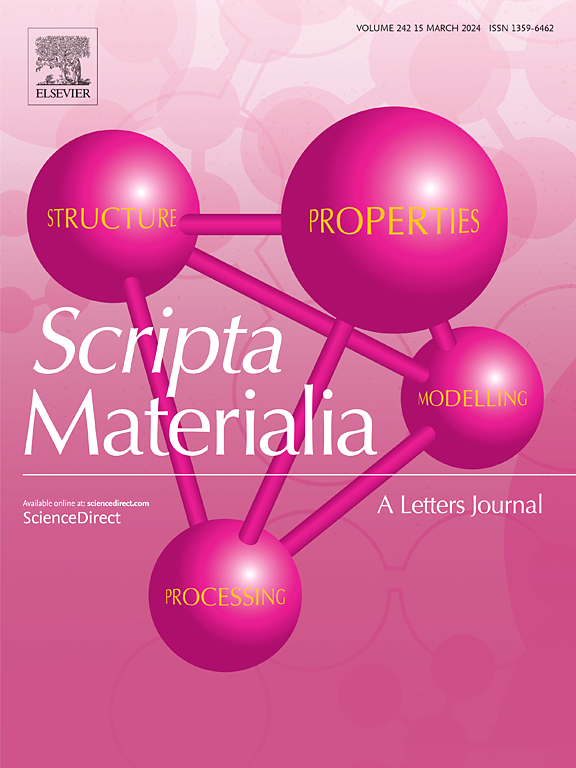[001]取向Cu71Al17.5Mn11.5单晶巨弹热温度变化及其循环稳定性
IF 5.3
2区 材料科学
Q2 MATERIALS SCIENCE, MULTIDISCIPLINARY
引用次数: 0
摘要
环境友好和节能的弹性热冷却是传统蒸汽压缩技术的一个有前途的替代方案。在这项工作中,我们观察到[001]取向Cu71Al17.5Mn11.5单晶具有9.4%的大超弹性应变和19.5 K的巨大绝热温度变化(ΔTad)。目前的ΔTad打破了铜基弹性热合金的记录。原位数字成像相关(DIC)技术发现,沿[001]方向的单轴应力促进了两个对应的马氏体变异对,导致应变分布不均匀,应力滞后明显。经过104次循环后,ΔTad从19.5 K降解到2.1 K,循环降解率为1.7 × 10−3 K /循环。我们的研究为cu基弹性热合金的晶体取向和抗疲劳策略的选择提供了有价值的见解。本文章由计算机程序翻译,如有差异,请以英文原文为准。
![Giant elastocaloric temperature change and its cyclic stability in [001]-oriented Cu71Al17.5Mn11.5 single crystal](https://img.booksci.cn/booksciimg/2025-2/101301071941770156876.jpg)
Giant elastocaloric temperature change and its cyclic stability in [001]-oriented Cu71Al17.5Mn11.5 single crystal
Environmentally friendly and energy-efficient elastocaloric cooling is a promising alternative to conventional vapor-compression technology. In this work, we observed a large superelastic strain of 9.4 % and a giant adiabatic temperature change (ΔTad) of 19.5 K in [001]-oriented Cu71Al17.5Mn11.5 single crystals. The present ΔTad breaks the record in Cu-based elastocaloric alloys. As revealed using in-situ digital imaging correlation (DIC) technique, the uniaxial stress along the [001] direction promoted two martensitic correspondent variant pairs, leading to the non-uniform strain distribution and pronounced stress hysteresis. Upon 104 cycles, the ΔTad degraded from 19.5 to 2.1 K, with a cyclic degradation rate of 1.7 × 10−3 K per cycle. Our study provides valuable insights into the selection of crystallographic orientation and fatigue resistance strategy for Cu-based elastocaloric alloys.
求助全文
通过发布文献求助,成功后即可免费获取论文全文。
去求助
来源期刊

Scripta Materialia
工程技术-材料科学:综合
CiteScore
11.40
自引率
5.00%
发文量
581
审稿时长
34 days
期刊介绍:
Scripta Materialia is a LETTERS journal of Acta Materialia, providing a forum for the rapid publication of short communications on the relationship between the structure and the properties of inorganic materials. The emphasis is on originality rather than incremental research. Short reports on the development of materials with novel or substantially improved properties are also welcomed. Emphasis is on either the functional or mechanical behavior of metals, ceramics and semiconductors at all length scales.
 求助内容:
求助内容: 应助结果提醒方式:
应助结果提醒方式:


